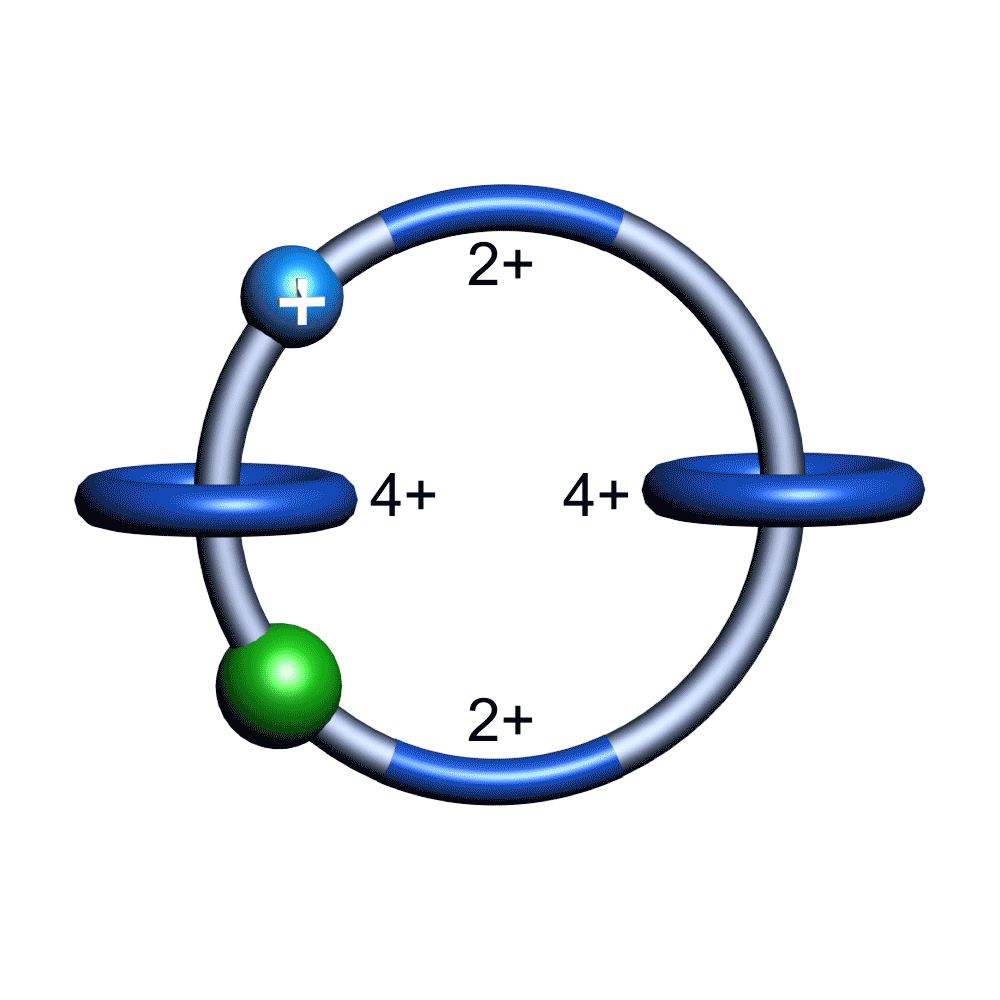A new type of electric molecular motor has now been introduced into the Molecular Machine family! The collaborative efforts of Postdoctoral Fellow Long Zhang and the molecular-machine theorist Professor Dean Astumian from the University of Maine, as well as Professor Bill Goddard from the California Institute of Technology, have led to a research article being published on 11 January 2023. See Publication #1272 / Nature 2023, 613, 280–286. A corresponding Research Briefing was also published in the same Journal https://www.nature.com/articles/d41586-022-04511-9.
Macroscopic electric motors continue to have a large impact on almost every aspect of modern society. Consequently, the effort towards developing molecular motors that can be driven by electricity could not be more timely. My research reports the design and synthesis of an electric molecular motor based on a [3]catenane whose components ― a loop interlocked with two identical rings ― are redox active, i.e. they undergo unidirectional motion in response to changes in voltage potential. The two rings are needed in order to achieve this unidirectional motion. A [2]catenane ― i.e. one loop interlocked with one ring does not run as a motor. The constitution of the loop ensures that both rings undergo highly (85%) unidirectional movement under the guidance of a flashing energy ratchet, while the interactions between the two rings give rise to a two-dimensional potential energy surface similar to that displayed by FOF1 ATP synthase. The unidirectionality is powered by an oscillating voltage or external modulation of the redox potential. This demonstration of electrically driven continual circumrotatory motion of two rings around a loop in a [3]catenane is free from the production of waste products and represents an important step towards surface-bound electric molecular motors. This piece of research represents a breakthrough in Molecular Machines and takes molecular nanotechnology to another level!
This breakthrough has been highlighted by C&EN, Chemistry World, Northwestern Now, Phys.org, ScienMag, Science Daily, X-MOL, ScienceNet, NU Chemistry Newsletters, UMaine News.
Further reading: L. Zhang, et. al., An electric molecular motor. Nature, 2023, 613, 280−286. https://www.nature.com/articles/s41586-022-05421-6
An artificial molecular motor powered by electricity, Nature Research Briefing https://www.nature.com/articles/d41586-022-04511-9
Electric molecular motor charges ahead, C&EN https://cen.acs.org/materials/molecular-machines/Electric-molecular-motor-charges-ahead/101/web/2023/01
Molecular motor running on electricity mimics biological motors, Chemistry World https://www.chemistryworld.com/news/molecular-motor-running-on-electricity-mimics-biological-motors/4016775.article
Now on the molecular scale: Electric motors, NORTHWESTERN NOW https://news.northwestern.edu/stories/2023/01/now-on-the-molecular-scale-electric-motors/
UMaine collaborates on study to explain theory behind electrically driven molecular motors, UMaine News https://umaine.edu/news/blog/2023/01/11/umaine-collaborates-on-study-to-explain-theory-behind-electrically-driven-molecular-motors/
Four years of effort to synthesize an “electric” molecular motor. X-MOL, https://www.x-mol.com/news/840080
After the artificial molecular pump, a new electric molecular motor breakthrough, ScienceNet https://paper.sciencenet.cn/htmlpaper/2023/1/202311211353185978398.shtm
Pictured below – Animation of the unidirectional rotary motion in the [3]catenane molecular motor during a redox cycle:

